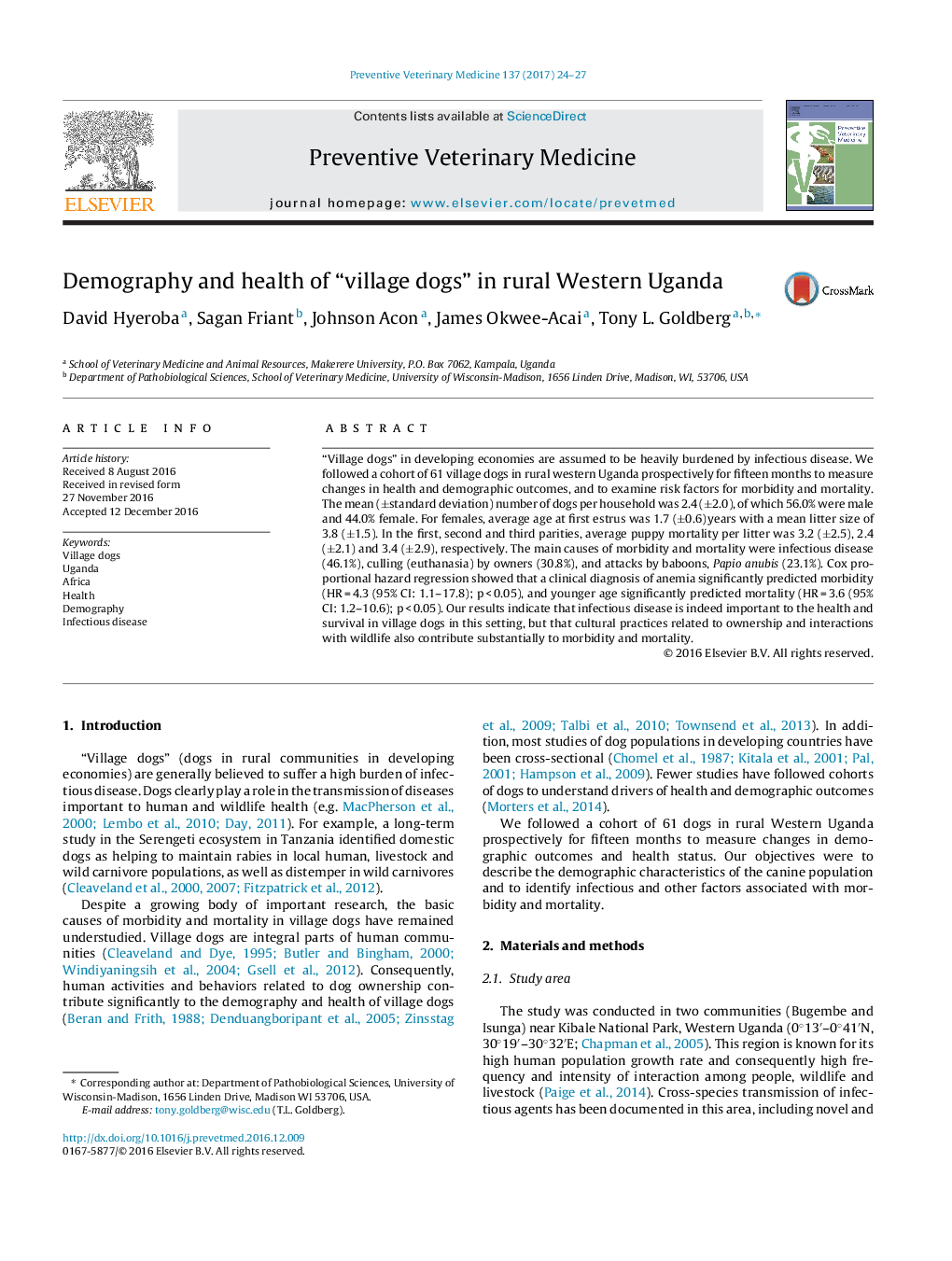| کد مقاله | کد نشریه | سال انتشار | مقاله انگلیسی | نسخه تمام متن |
|---|---|---|---|---|
| 5543641 | 1402559 | 2017 | 4 صفحه PDF | دانلود رایگان |
عنوان انگلیسی مقاله ISI
Demography and health of “village dogs” in rural Western Uganda
ترجمه فارسی عنوان
دموگرافیک و سلامت روستای سگسا در روستای غرب اوگاندا
دانلود مقاله + سفارش ترجمه
دانلود مقاله ISI انگلیسی
رایگان برای ایرانیان
کلمات کلیدی
سگهای روستایی، اوگاندا، آفریقا، سلامتی، دموگرافیک بیماری عفونی،
موضوعات مرتبط
علوم زیستی و بیوفناوری
علوم کشاورزی و بیولوژیک
علوم دامی و جانورشناسی
چکیده انگلیسی
“Village dogs” in developing economies are assumed to be heavily burdened by infectious disease. We followed a cohort of 61 village dogs in rural western Uganda prospectively for fifteen months to measure changes in health and demographic outcomes, and to examine risk factors for morbidity and mortality. The mean (±standard deviation) number of dogs per household was 2.4 (±2.0), of which 56.0% were male and 44.0% female. For females, average age at first estrus was 1.7 (±0.6) years with a mean litter size of 3.8 (±1.5). In the first, second and third parities, average puppy mortality per litter was 3.2 (±2.5), 2.4 (±2.1) and 3.4 (±2.9), respectively. The main causes of morbidity and mortality were infectious disease (46.1%), culling (euthanasia) by owners (30.8%), and attacks by baboons, Papio anubis (23.1%). Cox proportional hazard regression showed that a clinical diagnosis of anemia significantly predicted morbidity (HR = 4.3 (95% CI: 1.1-17.8); p < 0.05), and younger age significantly predicted mortality (HR = 3.6 (95% CI: 1.2-10.6); p < 0.05). Our results indicate that infectious disease is indeed important to the health and survival in village dogs in this setting, but that cultural practices related to ownership and interactions with wildlife also contribute substantially to morbidity and mortality.
ناشر
Database: Elsevier - ScienceDirect (ساینس دایرکت)
Journal: Preventive Veterinary Medicine - Volume 137, Part A, 1 February 2017, Pages 24-27
Journal: Preventive Veterinary Medicine - Volume 137, Part A, 1 February 2017, Pages 24-27
نویسندگان
David Hyeroba, Sagan Friant, Johnson Acon, James Okwee-Acai, Tony L. Goldberg,
